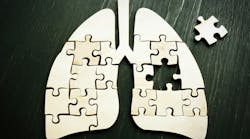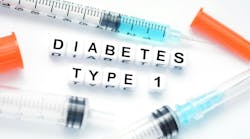CVS Health released its 2021 Health Care Insights Study revealing the long-lasting impacts of the COVID-19 pandemic but also the resilience of patients, providers and the healthcare system and growing interest in novel ways to engage with healthcare to achieve a more individualized experience.
CVS Health fielded the 2021 Health Care Insights Study (formerly known as the Path to Better Health Study) with 1,000 consumers and 400 providers who were surveyed for their thoughts on the state of healthcare and how they are navigating this evolving landscape. The study reveals people’s changing viewpoints toward their own health as well as generational and gender preferences in how they would like their healthcare delivered.
The study found people are starting to seek new avenues of care, using the last year as an opportunity to work on health goals and reexamine priorities. In fact, 77% of people said the COVID-19 pandemic has led them to pay more attention to their health in general, and 50% indicated previous stay-at-home orders helped them achieve their health goals.
Even as access to health insurance coverage (55%) and location of care (43%) remain among the top factors that influence consumer healthcare decisions, more people are exploring different avenues of care. For example, the study reveals shifts in the way people prefer to receive routine care, with a slight movement away from primary care providers (PCPs) to other health care resources. Routine care from PCPs has dropped since last year (56% versus 62% in 2020), and the use of online resources (19% versus 12% in 2020), community health centers (19% versus 15% in 2020), and local pharmacies (17% versus 11% in 2020) have all grown in preference.
While the COVID-19 pandemic has created opportunities to accelerate and improve healthcare, the Health Care Insights Study also found many people have been struggling. Social isolation and economic uncertainty, among other pandemic-related factors, have impacted the mental health and wellbeing of many. The study data point to a lack of resources and support for vulnerable populations, with increased levels of substance use. Consumers reported an uptake in the use of nicotine (21%), alcohol (20%) and opioids (10%) this past year.
In addition to increased substance use, feelings of stress have been pervasive, especially for men. Men reported slightly higher levels of stress compared to female respondents over the significant shifts that took place during quarantine. For example, 70% of men compared to 59% of women said the COVID-19 pandemic had a high/moderate impact on stress related to caring for children who live in the home. While men reported higher level of stress related to the household, women weren’t as happy with their level of social connection — only 68% of women said they were happy with their social connection compared to 80% of men.
Not surprisingly, young adults (18-34 years old) were most impacted by the pandemic and the most likely age group to report depression (35%) as well as a higher rate of mental illness (28%), compared to total respondents (23%). Despite the pandemic’s impact on mental health, 74% did not seek mental health services. The data shows this gap is due to costly care — 28% of consumers said they did not visit a mental or behavioral health specialist when they needed support due to costs.
Other highlights from the study include:
· During a time that required social distancing, the use of the virtual tools to seek care surged. More than half of consumers (57%) indicated they had used virtual care for a healthcare visit. Providers also indicated having access to virtual visits (72%) and telehealth (71%) would be very or somewhat valuable for their patients in terms of communication.
· There are gender differences in how men and women interact with their healthcare. Women more than men typically use nurse practitioners to get any type of health information (27% versus 21%), and more women want their PCPs to be aware of their lifestyle choices, specifically their alcohol use compared to men (86% versus 79%). Annual checkups are a more likely reason for women (73%) than for men (58%) to communicate with their PCP, suggesting men need to take a more proactive role in their health around a yearly visit.
· Providers can play a role in healthcare affordability for their patients. More than half of consumers (61%) said their providers have not asked about affordability of healthcare and/or discussed resources to assist with costs. One quarter (25%) of respondents said they had low/no familiarity with the out-of-pocket costs they pay for medical care. Another 23% said they do not understand how to look at their health plan to understand out-of-pocket costs.





